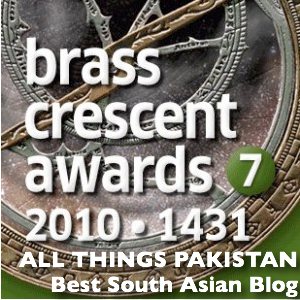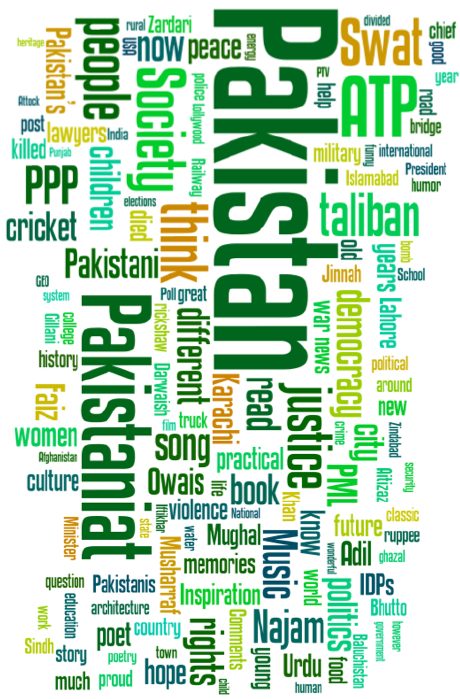 (Editors Note: This is the second of a two part post on the author’s reminiscences of growing up in pre-Cultural Revolution China. In the first part Imran H. Khan looked at the cultural and social aspects of the China that was and how they looked to a young Pakistani boy. In this, the second part, he looks at the political dimensions).
(Editors Note: This is the second of a two part post on the author’s reminiscences of growing up in pre-Cultural Revolution China. In the first part Imran H. Khan looked at the cultural and social aspects of the China that was and how they looked to a young Pakistani boy. In this, the second part, he looks at the political dimensions).
At times the course of human affairs takes on an intensity and complexity of such proportions that it takes decades to understand it. The Chinese Cultural Revolution was one such event, and I was lucky to see it from the front seat without being scarred by it.
It was a clash of mega proportions that erupted in an instance. The sleeping Chinese Dragon was waking up after being colonized but was not sure about its new values. The old guard saw in its weakness as an opportunity to assert itself, but the new power elite was not going to let it take China back to the old ways which had failed to protect it from being exploited by the foreign powers.
“Although the bourgeoisie has been overthrown, it is still trying to use the old ideas, culture, customs, and habits of the exploiting classes to corrupt the masses, capture their minds, and endeavor to stage a comeback. The proletariat must do just the opposite: It must meet head-on every challenge of the bourgeoisie in the ideological field and use the new ideas, culture, customs, and habits of the proletariat to change the mental outlook of the whole of society. At present, our objective is to struggle against and crush those persons in authority who are taking the capitalist road, to criticize and repudiate the reactionary bourgeois academic “authorities” and the ideology of the bourgeoisie and all other exploiting classes and to transform education, literature and art, and all other parts of the superstructure that do not correspond to the socialist economic base, so as to facilitate the consolidation and development of the socialist system.”
 I was enrolled in a missionary school of Convent of Jesus and Mary, which was the only English medium available for the foreign children. I had enjoyed learning about world geography and history. One fine day when I turned into the road where the school was located I was surprised to see a large number of young Red Guards occupying the school and was turned away. I later learned that the nuns and priests were charged with spying and the school had been permanently closed. This was a huge setback for all the children who were enrolled there.
I was enrolled in a missionary school of Convent of Jesus and Mary, which was the only English medium available for the foreign children. I had enjoyed learning about world geography and history. One fine day when I turned into the road where the school was located I was surprised to see a large number of young Red Guards occupying the school and was turned away. I later learned that the nuns and priests were charged with spying and the school had been permanently closed. This was a huge setback for all the children who were enrolled there.
This was my real introduction to the Cultural Revolution.
 The art teacher who used to come to our house to teach Chinese art to my mother also vanished and we learned later that he was considered a revisionist. Anyone charged as being a revisionist was publicly disgraced by being paraded on a truck around the city with a placard of his counter revolutionary acts hanging around his head.
The art teacher who used to come to our house to teach Chinese art to my mother also vanished and we learned later that he was considered a revisionist. Anyone charged as being a revisionist was publicly disgraced by being paraded on a truck around the city with a placard of his counter revolutionary acts hanging around his head.
These were very bewildering times as eleven million Red Guards paraded around the city. The speakers located on most central public roads blared national songs and propaganda. The result of listening to those songs is that I still know two of the songs even though I made no attempt to learning them. One of the songs is “The East is Red” that can also be seen below.

 With no school and parents busy in their diplomatic activities, I found my self in nearly complete freedom. With a brand new Chinese bicycle in possession, I set out to see Peking from one end to the other.
With no school and parents busy in their diplomatic activities, I found my self in nearly complete freedom. With a brand new Chinese bicycle in possession, I set out to see Peking from one end to the other.
My favorite destinations used to be museums, parks, sports events, movies and theatrical shows. My friends had a competition to find interesting places that were off the main areas and trade these secrets with each other. I watched each and every table tennis, gymnastics, volleyball and badminton games played in multi-day competitions.
 The Military museum had artifacts dating back to the communist party struggle against the Nationalists who were much better armed with planes and tanks. What struck me were the grass samples that the communist leaders and others ate during their Long March. It drove home the point that when the people are motivated, it is the spirit that can overcome the deficiency in weapons.
The Military museum had artifacts dating back to the communist party struggle against the Nationalists who were much better armed with planes and tanks. What struck me were the grass samples that the communist leaders and others ate during their Long March. It drove home the point that when the people are motivated, it is the spirit that can overcome the deficiency in weapons.
The Peking Zoo had some of the most exotic animals. Some of them like the Giant Pandas, certain types of storks and oxens were indigenous to China. While it was not a large zoo, it allowed spectators to get much closer to the animals than any other zoo that I have been to.
The public bus system of Peking was very extensive and if you had a pass you could go from one end of Peking to another without even changing the bus. No school meant having the opportunity to do just that all day long.
Deification of Mao
 In China, in those days, Chairman Mao was the closest thing to God.
In China, in those days, Chairman Mao was the closest thing to God.
The communist party did a great job in using the medium of art to project their values and visions of the future. The walls around the city had huge billboards with art work that showed how they wanted to see their country in the years to come. It seemed that the country was bursting with energy like a stem cell, and the communist party was trying to guide that energy to a bigger and brighter future that was egalitarian.
They created many musical and theatrical productions to convey this message. I had the opportunity to experience the fervor that they created amongst the viewers. This was also true of many movies that showed the successful struggles of masses against the oppressors, whether they were foreign or local.
My parents decided that I had enough fun and it was time to get back into the education system. The Principal of Cadet College of Hasan Abdal had mercy on me and admitted me even though I did not do well in Urdu.
I flew out of Shanghai on a PIA Being 707 and happened to be the only passenger on it. On the way it stopped in Canton at 1 am in the morning. There were passengers from a couple of Ilushin turbo props from North Vietnam and Laos already at the airport.
The Chinese had organized a short cultural program for the passengers of these airlines. So they all waited for the single passenger from this huge plane to come down and witness the show. As the show ended, this single passenger – a Pakistani child – walked away into his standing Boeing.
Thus came to an end my journey through tumultuous China in a cultural crescendo that faded into the night as the Boeing climbed out of the clouds headed for Dacca, being fussed over by seven air hostesses and staff.
Pakistan China Friendship
The work done by members of the Pakistan Embassy in those defining times laid the foundation of Pakistan China friendship. The result of those efforts is that there are now approximately 10,000 Chinese workers engaged in 120 projects in Pakistan, which includes heavy engineering, power generation, mining, and telecommunications. One of the high visibility project is the jointly developed JF-17 amongst many other defense related joint projects.
Postscript: On Stamps
The New York Times recently reported that, “Once banned by Mao Zedong as a bourgeois activity, stamp collecting has become increasingly popular in China in recent years. While early collectors were from Hong Kong, Taiwan, and the international Chinese diaspora, some important Mainland Chinese collectors are today ‘repatriating’ stamps, in the same way that others are bringing back Chinese artworks.” You can view some of my Chinese stamp collection by clicking on the image below.
Imran H. Khan blogs at ‘Planet Earth’, where this was first posted.





















































@Sakib Ahmed
Actually its your explanation based on “unforseen forces” which is the oversimplication. Mao’s Cultural Revolution and Great Leap Forward resulted in murder of countless middle class and upper class educated and intellectuals, and famine that killed tens of millions. The lesson for Pakistan from China lies entirely in the polices of Deng Xiaoping, who moved China from Communism to Capitalism while keeping appearance of Communism, and to hard core Pragmatism and Economics.
Pakistanis still talk about a big revolution in Pakistan where they kill “elites” and suddenly country will move to progress. Some cite China as an example, I believe they are wrong.
@Aamir Ali
What you say is superficially true but it is an oversimplification. The tyrant Mao was simply a tool in the hands of unforeseen forces which bring about radical change in the world from time to time. The Cultural Revolution destroyed the corrupt and indolent middle and upper classes and allowed the Chinese to realise their dormant potential. I doubt if the post-Mao reforms would have worked without the destruction of the self-conscious, hidebound upper echelons of Chinese society. To understand that society, and the extent of Mao’s inhumanity to fellow Chinese, do read “Wild Swans”.
The lesson for us in Pakistan is that we need to mend our craven ways and our perpetual sense of inferiority towards the west in general, and the USA in particular. I hope we can bring about that revolution peacefully. This is the subject of my latest blog post.
You might also find the following link helpful (do read the comments as well):
http://sakibahmad.blogspot.com/2010/01/punjab-gove rnments-own-goal.html
Chinese and Irani societies have ability to organize peaceful protests to bring change ?!!! Like in Tiananmen Square or Tibet a few years ago or over Ahmedinejad’s illegal election some 18 months back ? What I remember is violent state suppression of protesters. The current Chinese regime is there because of Mao’s victory in civil war and Iranian regime is there because of violent overthrow of Shah in 1979. Pakistanis have far more freedoms and rights of democratic protest than Iranians or Chinese.
South Korea certainly has peaceful protests for change but that has a lot to due with US presence and insistence on democratic frameworks.
The only lesson Pakistanis should learn from China is that the Cultural Revolution and Great Leap Forward were gigantic attempts at shortcuts and huge failures, with large loss of life and famine. China today is because of Deng Xiaoping’s philosophies that began in 1979, not Mao’s crazy ways.
Imran. Nice post.
Yes, there are many lessons that everyone in the world including Pakistan can learn from China. But what lessons. Hopefully not of repression for revolution.